How to Seal an Aluminum Boat: A Clear and Confident Guide
If you own an aluminum boat, you know how important it is to maintain it properly. Sealing your boat is one of the most important tasks you can do to keep it in top condition. Sealing your boat can help prevent leaks, protect it from the elements, and increase its lifespan.
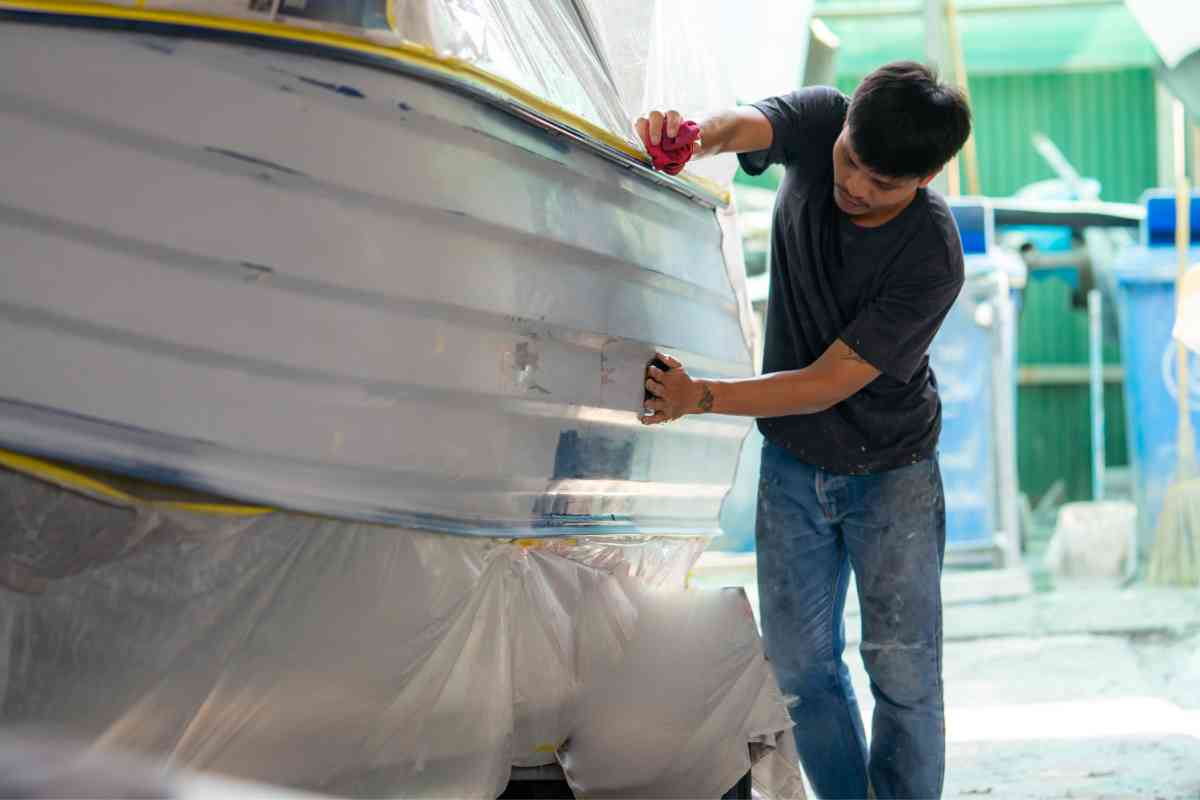
Sealing an aluminum boat may seem like a daunting task, but it’s actually quite simple.
How do you reseal an aluminum boat?
Resealing an aluminum boat involves proper preparation, choice of sealant, and application. Initially, thoroughly clean the boat’s surface and let it dry completely. Select a sealant designed specifically for aluminum boats. Apply the sealant as per manufacturer’s instructions, covering all potential leak points, seams, and rivets.
The first step is to choose the right sealant for your boat material. There are many different types of sealants available, so it’s important to choose one that is specifically designed for use on aluminum boats. Once you have your sealant, you’ll need to prepare the surface of your boat by cleaning it thoroughly and allowing it to dry completely. Then, you can apply the sealant according to the manufacturer’s instructions.
By sealing your aluminum boat, you can help protect it from the harsh marine environment and ensure that it lasts for many years to come. Whether you’re a seasoned boater or just starting out, sealing your boat is an important part of boat maintenance that should not be overlooked. With the right sealant and a little bit of know-how, you can easily seal your aluminum boat and keep it in top condition for years to come.
Understanding Aluminum Boats
Aluminum boats are popular for their durability, lightweight, and low maintenance. They are ideal for boating enthusiasts who want a boat that can withstand harsh weather conditions and last for years. Aluminum boats are commonly used for fishing, leisure boating, and commercial purposes.
Aluminum Boat Construction
Aluminum boats are typically made of marine-grade aluminum alloy, which is strong, corrosion-resistant, and lightweight. The aluminum sheets are welded together to form the hull, and the seams are then sealed with a marine-grade sealant.
Aluminum boats can be constructed in different ways, including:
- Riveted construction: The aluminum sheets are held together with rivets, which can be prone to leaking if they get loose.
- Welded construction: The aluminum sheets are welded together, creating a stronger and more watertight hull.
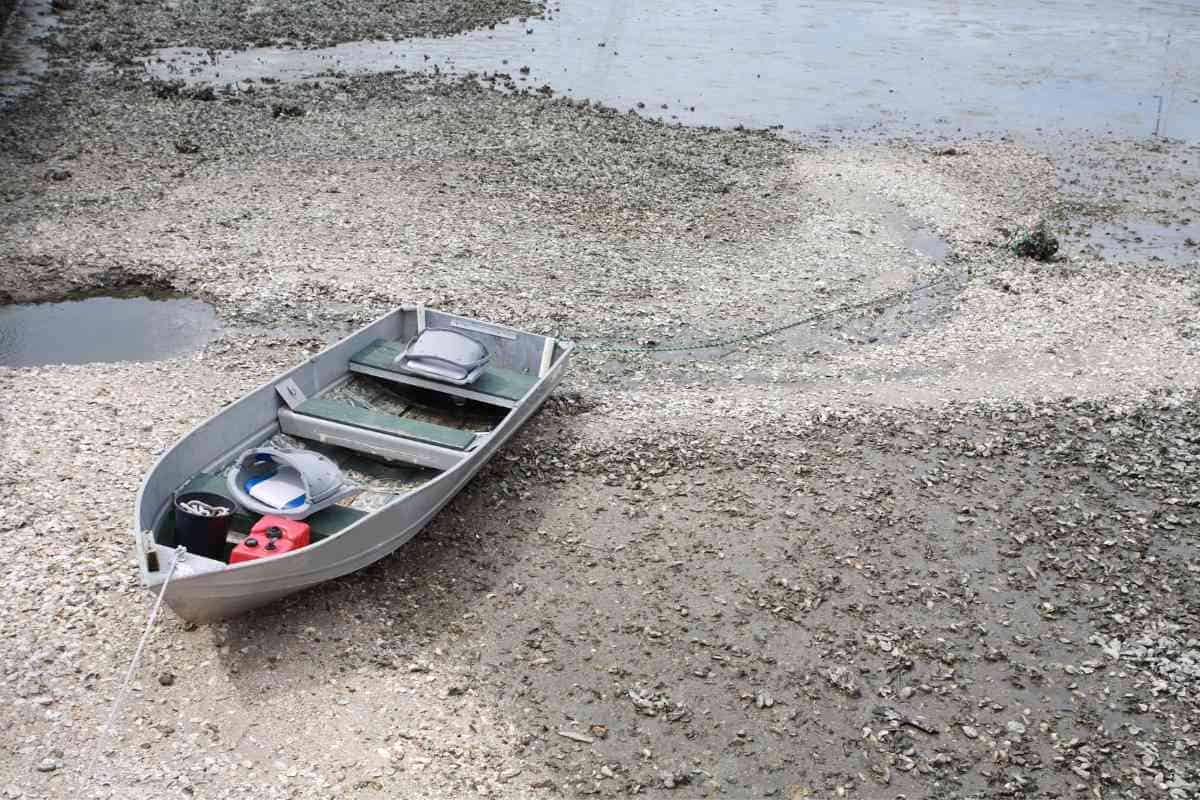
Aluminum Jon Boats
Aluminum jon boats are a popular type of aluminum boat that is designed for fishing in shallow waters. They are lightweight and easy to maneuver, making them ideal for navigating through narrow streams and rivers. Jon boats are typically constructed with rivets and are available in different sizes and styles.
Boating with Aluminum Boats
Aluminum boats are suitable for different types of boating, including leisure boating, fishing, and commercial purposes.
They are ideal for navigating through different water conditions, including freshwater and saltwater. Aluminum boats are also easy to maintain, requiring minimal upkeep compared to other types of boats.
Sea-Worthiness of Aluminum Boats
Aluminum boats are known for their durability and strength, making them ideal for navigating through rough waters. They are resistant to corrosion and rust, which makes them suitable for saltwater boating.
However, it is important to ensure that the boat is properly maintained and inspected regularly to ensure its sea-worthiness.
In summary, aluminum boats are a popular choice for boating enthusiasts due to their durability, lightweight, and low maintenance. They are suitable for different types of boating and can withstand harsh weather conditions. Proper maintenance and inspection are essential to ensure the sea-worthiness of the boat.
Identifying Common Issues
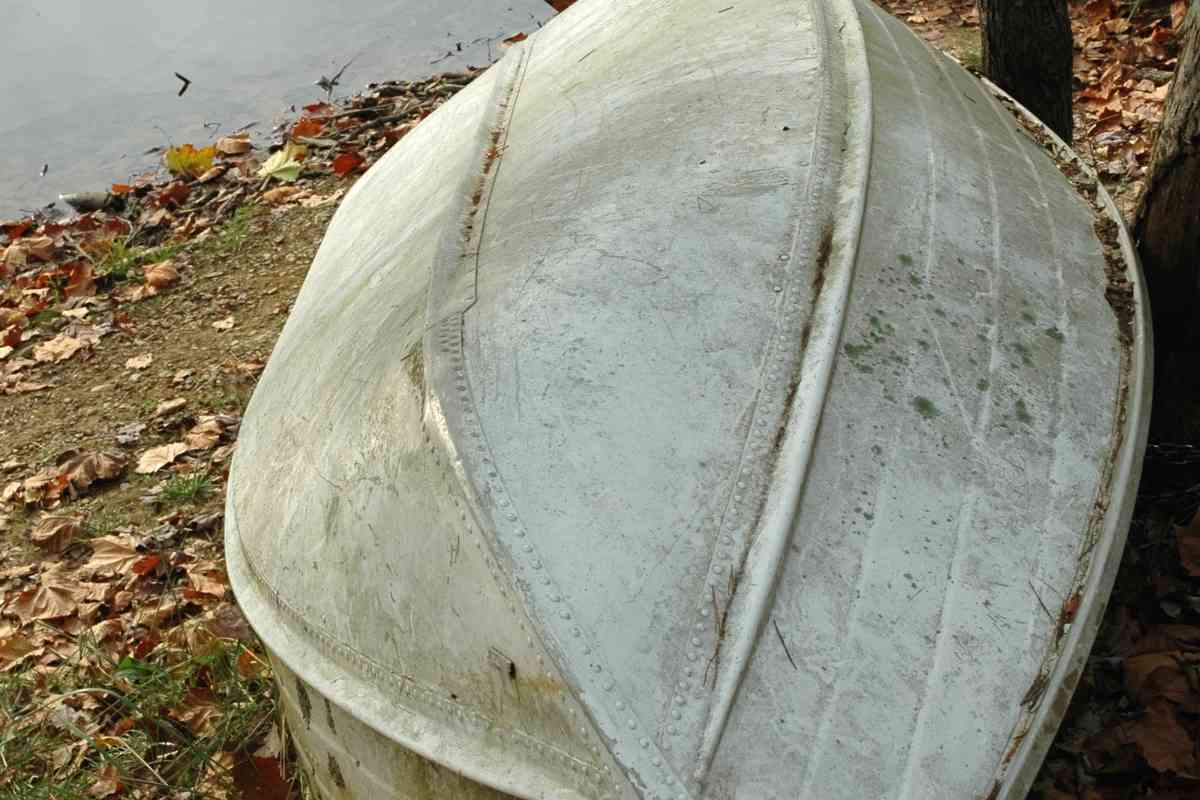
When it comes to sealing an aluminum boat, it’s important to identify any potential issues before beginning the sealing process. Here are some common issues to keep an eye out for:
Recognizing Leaks
Leaks can be a major issue for aluminum boats, as they can cause significant damage if not addressed promptly. Signs of a leak may include water in the bilge, damp or wet areas on the floor or seats, or water dripping from the ceiling or walls. If you suspect a leak, it’s important to identify the source as soon as possible to prevent further damage.
Inspecting Rivets
Aluminum boats are constructed with rivets, which can become loose over time and cause leaks. To inspect your boat’s rivets, start by visually inspecting each one for signs of damage or corrosion. You may also want to use a rubber mallet to gently tap each rivet to check for any looseness.
Checking Seams
Seams are another potential source of leaks in aluminum boats. To check your boat’s seams, start by visually inspecting each one for signs of damage or corrosion. You may also want to use a flashlight to inspect the seams from the inside of the boat, looking for any signs of light coming through.
Overall, it’s important to thoroughly inspect your aluminum boat for any potential issues before attempting to seal it. By identifying and addressing any leaks, loose rivets, or damaged seams, you can help ensure that your boat stays in good condition for years to come.
Preparation Before Sealing

Before sealing your aluminum boat, it is essential to prepare the surface properly to ensure that the sealant adheres correctly. This section will cover the necessary steps to take before sealing your boat.
Cleaning the Boat
The first step in preparing your aluminum boat for sealing is to clean it thoroughly. Use a high-quality aluminum boat cleaner to remove any dirt, grime, or oxidation that may be present on the surface. Follow the manufacturer’s instructions carefully and rinse the boat thoroughly with clean water.
Removing Old Sealant
If your boat has old sealant that needs to be removed, use a scraper or putty knife to remove as much of the old sealant as possible. Be careful not to damage the boat’s surface while doing this. Once you have removed the old sealant, clean the surface again with an aluminum boat cleaner.
Inspecting for Wear and Tear
Before applying the new sealant, inspect your boat for any signs of wear and tear. Check the seams and rivets for any signs of corrosion or damage. If you notice any issues, repair them before applying the new sealant.
Regular maintenance is essential to keep your boat in good condition. Always inspect your boat before and after each use to ensure that it is in good working order. Taking care of your boat will help to extend its lifespan and keep it looking great.
Before sealing your aluminum boat, you must clean it thoroughly, remove any old sealant, and inspect it for wear and tear. By following these steps, you can ensure that the new sealant adheres correctly and that your boat is in good condition.
Sealing the Boat
When it comes to sealing your aluminum boat, there are a few things to keep in mind. In this section, we’ll cover the basics of choosing the right sealant, applying sealant to leaks, sealing rivets, over-sealing, and under-sealing.
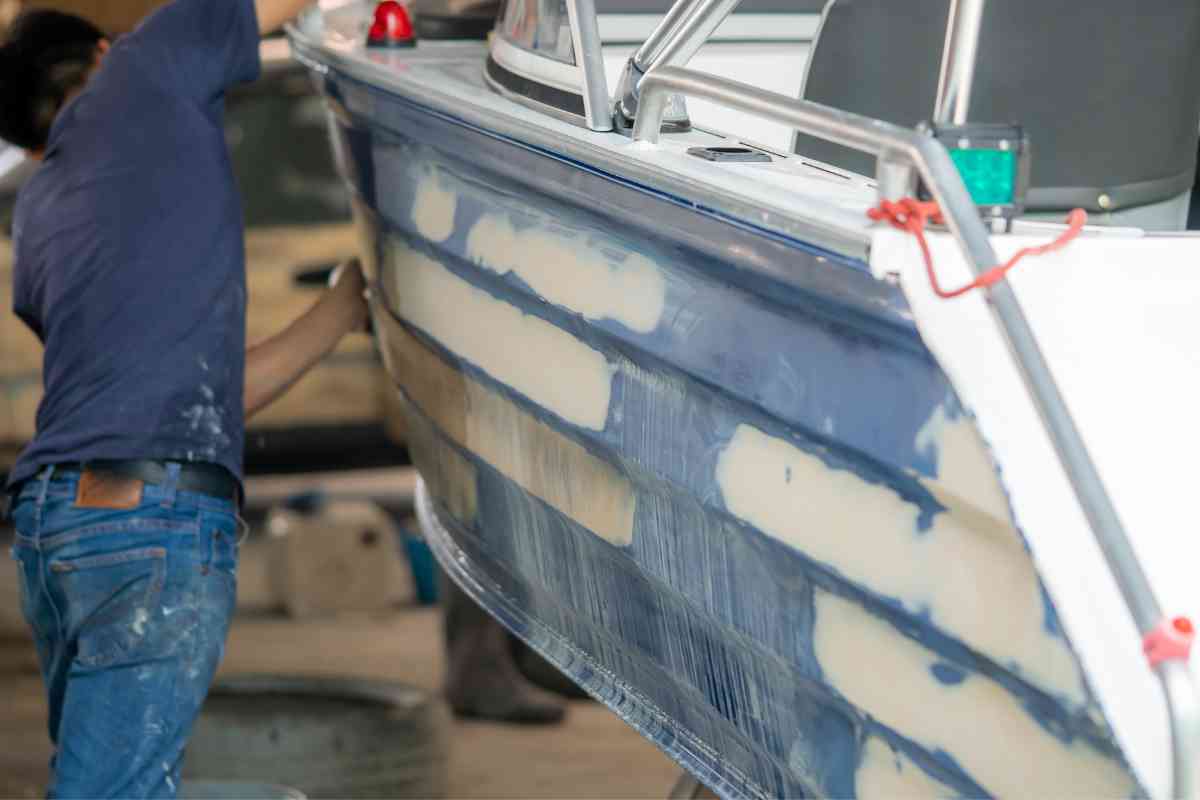
Choosing the Right Sealant
Choosing the right sealant is crucial for a successful sealing job. You’ll want to select a sealant that is designed for use on aluminum boats and can withstand exposure to water and other elements. Some popular options include epoxy, silicone, gluvit, and resin.
When selecting a sealant, be sure to read the manufacturer’s instructions carefully to ensure that it is compatible with your boat’s material. You’ll also want to consider the type of application method required. Some sealants may require a caulking gun, while others can be applied with a brush or roller.
Applying Sealant to Leaks
If you have identified leaks in your aluminum boat, applying sealant is a straightforward process. First, clean the area around the leak with a wire brush or sandpaper to remove any debris or loose material. Then, apply the sealant according to the manufacturer’s instructions, making sure to cover the entire area around the leak.
Sealing Rivets
Leaking rivets are a common problem in aluminum boats. To repair leaking rivets, you’ll need to remove the old rivet and replace it with a new one. Before installing the new rivet, be sure to apply sealant around the hole to prevent future leaks.
Over-Sealing and Under-Sealing
Over-sealing and under-sealing are two common mistakes to avoid when sealing your aluminum boat. Over-sealing occurs when too much sealant is applied, which can lead to bulging or cracking. Under-sealing occurs when too little sealant is applied, which can result in leaks.
To avoid these issues, be sure to follow the manufacturer’s instructions carefully and apply the sealant evenly and in the recommended amount. It’s also a good idea to check your work periodically to ensure that the sealant is holding up over time.
In summary, sealing your aluminum boat is an important part of maintenance that can help prevent leaks and other issues. By choosing the right sealant, applying it correctly, and avoiding common mistakes, you can ensure that your boat stays in good condition for years to come.
Curing and Finishing Process
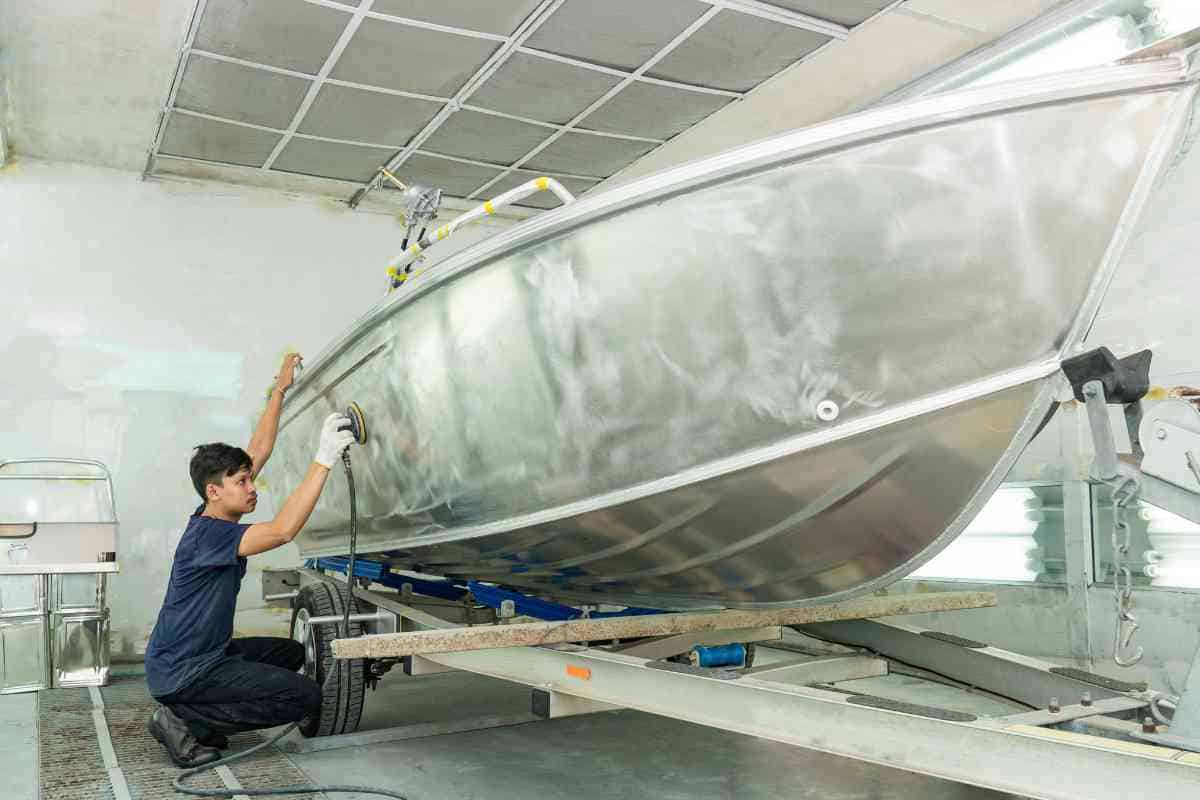
Understanding Curing Time
After applying the sealant, it is important to allow it to cure properly. The curing time will depend on the type of sealant used, as well as the temperature and humidity of the environment. Make sure to read the label of the sealant for specific instructions on curing time.
It is important to keep the boat dry and avoid exposing it to water during the curing process. This will ensure that the sealant sets properly and creates a waterproof barrier.
Applying Final Coat
Once the sealant has cured, it is time to apply the final coat. This will provide an extra layer of protection and ensure that the sealant lasts for a long time. Make sure to use a sealant that is compatible with the first coat.
Before applying the final coat, make sure to clean the surface of the boat thoroughly. This will ensure that there is no dirt or debris that could interfere with the bonding process.
Apply the final coat evenly, making sure to cover the entire surface of the boat. Make sure to follow the instructions on the label for working time and drying time.
In summary, allowing the sealant to cure properly and applying the final coat will ensure that your aluminum boat is properly sealed and protected from water damage. Make sure to follow the instructions on the label of the sealant and take the necessary precautions to ensure that the sealant sets properly.
Post-Sealing Maintenance and Inspection
Once you have sealed your aluminum boat, it is important to perform regular maintenance and inspections to ensure that the sealant remains intact and your boat stays protected from water damage. Here are some tips to help you with post-sealing maintenance and inspection:
Maintenance
Regular maintenance is key to keeping your boat in good condition. Here are some maintenance tips to follow:
- Keep your boat clean and dry. This will prevent the growth of mold and mildew, which can damage the sealant.
- Check your boat for any signs of wear and tear, such as cracks or holes in the sealant. If you notice any damage, repair it as soon as possible.
- Avoid using harsh chemicals or abrasive cleaners on your boat, as they can damage the sealant.
Inspection
Regular inspections will help you identify any issues with your boat’s sealant before they become major problems. Here are some inspection tips to follow:
- Inspect your boat’s sealant at least once a year, or more frequently if your boat is exposed to harsh weather conditions.
- Look for any signs of wear and tear, such as cracks, holes, or peeling sealant.
- Check the areas around fittings and hardware, as these are common areas for leaks to occur.
- If you notice any issues with your boat’s sealant, address them immediately to prevent further damage.
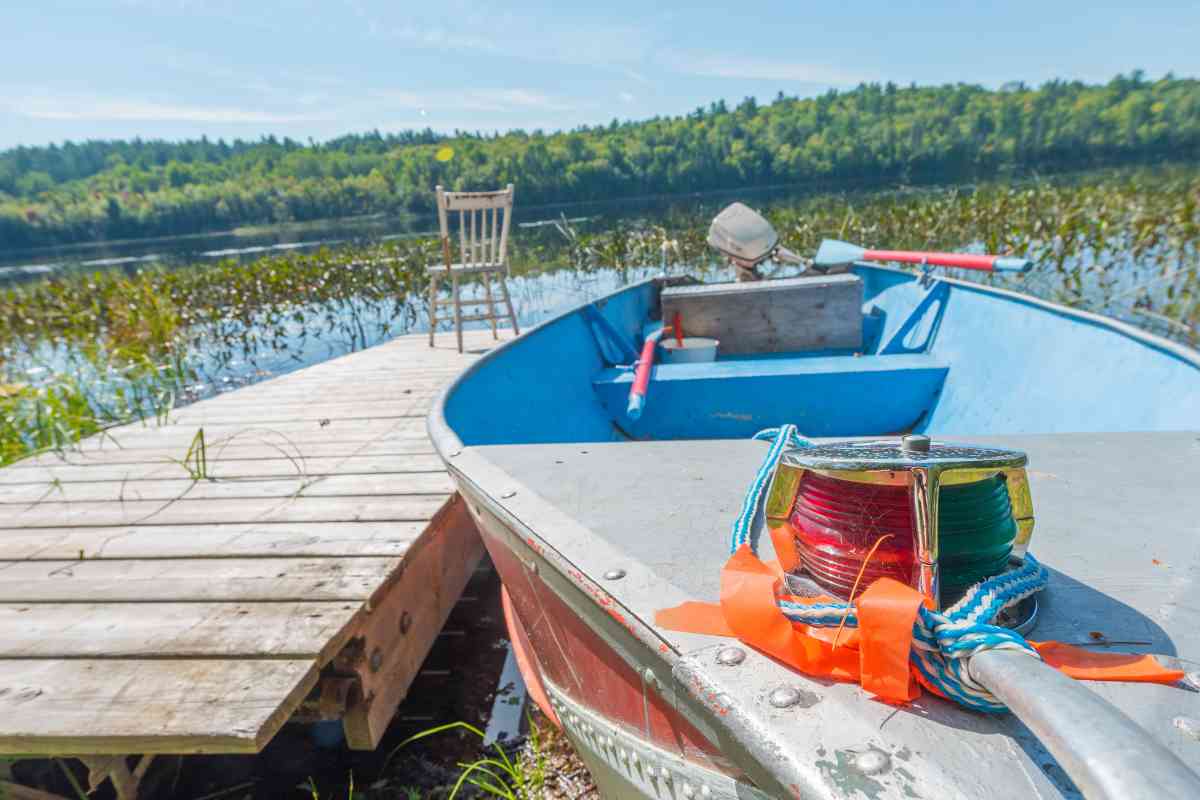
Wear and Tear
Over time, your boat’s sealant will naturally wear down due to exposure to the elements. Here are some tips to help you manage wear and tear:
- Keep your boat covered when not in use to protect it from the sun and other weather conditions.
- Consider applying a protective coating to your boat’s sealant to help extend its lifespan.
- If you notice any signs of wear and tear, such as cracks or holes in the sealant, repair them as soon as possible to prevent further damage.
By following these post-sealing maintenance and inspection tips, you can help ensure that your aluminum boat stays protected from water damage and lasts for years to come.
Additional Repairs and Improvements
When it comes to maintaining your aluminum boat, there are additional repairs and improvements that you can make to ensure that it lasts for years to come. In this section, we will discuss two common areas of concern: repairing the decking and strengthening the transom.
Repairing the Decking
Over time, the decking on your aluminum boat may begin to show signs of wear and tear. This can be caused by exposure to the elements, water damage, or general use. If you notice any soft spots or areas that are starting to rot, it’s important to address these issues as soon as possible.
One option for repairing the decking is to use epoxy resin and hardener. This can be a time-consuming process, but it’s worth the effort to ensure that your boat is in good condition. Here’s how to do it:
- Remove the damaged section of the decking.
- Clean the area thoroughly and allow it to dry completely.
- Mix the epoxy resin and hardener according to the manufacturer’s instructions.
- Apply the mixture to the damaged area, making sure to spread it evenly.
- Allow the epoxy to cure completely before sanding it down and applying a new layer of non-skid coating.
Strengthening the Transom
The transom is another area of concern for aluminum boat owners. It’s the part of the boat that supports the engine, and it can become weakened over time due to exposure to the elements, water damage, or general wear and tear.
One way to strengthen the transom is to add additional support using epoxy resin and fiberglass cloth. Here’s how to do it:
- Clean the transom thoroughly and allow it to dry completely.
- Cut a piece of fiberglass cloth to fit the area where you want to add support.
- Mix the epoxy resin and hardener according to the manufacturer’s instructions.
- Apply the mixture to the transom, making sure to spread it evenly.
- Place the fiberglass cloth over the area where you want to add support.
- Apply another layer of epoxy resin and hardener over the fiberglass cloth.
- Allow the epoxy to cure completely before sanding it down and painting it to match the rest of the boat.
Resealing
In addition to repairing and strengthening specific areas of your aluminum boat, it’s important to reseal it periodically to prevent leaks and water damage. There are a variety of sealants available on the market, including polyurethane and silicone-based options.
When choosing a sealant, it’s important to consider the specific needs of your boat. For example, if you frequently use your boat in saltwater, you may want to choose a sealant that is specifically designed for marine environments.
Overall, by taking the time to make additional repairs and improvements to your aluminum boat, you can ensure that it remains in good condition for years to come.
Frequently Asked Questions
What is the best way to seal the bottom of aluminum boat?
The best way to seal the bottom of an aluminum boat is to use an appropriate sealant. You should first clean and dry the surface before applying the sealant. The sealant should be compatible with aluminum and should be able to withstand water exposure without breaking down.
How do I stop my aluminum boat from leaking?
To stop your aluminum boat from leaking, you should first identify the source of the leak. Once you have identified the source, you can use an appropriate sealant to fix the leak. You should also check the rivets and seams for any signs of wear or damage, and repair or replace them as necessary.
Does Flex Seal work on aluminum boat?
Flex Seal can work on aluminum boats, but it may not be the best option for long-term sealing. It is important to note that Flex Seal is not specifically designed for marine use, and may not hold up to prolonged exposure to water.
What can you use to seal aluminum?
There are several sealants that can be used to seal aluminum, including marine-grade silicone sealant, epoxy, polyurethane, and polysulfide. The best sealant for your aluminum boat will depend on the specific application and the type of material you are working with.
How do you seal rivets on an aluminum boat?
To seal rivets on an aluminum boat, you should first clean and dry the area around the rivet. Then, apply a sealant to the rivet and surrounding area, making sure to cover the entire surface. You may also want to consider reinforcing the rivet with a patch or additional sealant.
What is the best aluminum boat leak sealer?
There are several effective aluminum boat leak sealers on the market, including 3M Marine Adhesive Sealant 5200, Marine-Tex Gluvit Waterproof Epoxy Sealer, and TotalBoat Aluminum Boat Leak Sealer. The best leak sealer for your boat will depend on the specific application and the severity of the leak.
